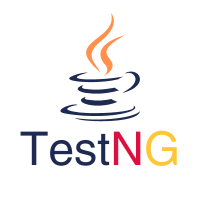Continuous Integration
Continuous Integration (CI) is the practice of frequently and automatically integrating code changes into a shared repository, where automated builds and tests are run to detect issues early in the development process. Setting up continuous integration (CI) for TestNG tests using Jenkins is a common practice for automating the build and testing process. Here are the steps to set up TestNG continuous integration with Jenkins:
Prerequisites:
- Jenkins server installed and running.
- Git repository with your TestNG project hosted on a platform like GitHub or Bitbucket.
- Maven or Gradle for building and managing dependencies in your TestNG project.
Step 1: Create a Jenkins Job:
- Log in to your Jenkins server.
- Click on "New Item" to create a new Jenkins job.
- Enter a name for your job and select the type of project. For Java projects, you can choose Freestyle project or Pipeline.
- Click OK to create the job.
Step 2: Configure Source Code Management:
- In the job configuration, go to the Source Code Management section.
- Choose your version control system (e.g., Git).
- Enter the repository URL and credentials if required.
- Specify the branch you want to build (e.g., master).
Step 3: Configure Build Steps:
Depending on whether you are using Maven or Gradle for your TestNG project, configure the build steps accordingly:
For Maven:
- In the job configuration, go to the Build section.
- Select Invoke top-level Maven targets.
- In the Goals field, enter the Maven goals to build and run your TestNG tests. For example, to run tests, you can use clean test.
Step 4: Configure Post-Build Actions:
- In the job configuration, go to the Post-build Actions section.
- To archive your TestNG test reports for later viewing, add a Publish JUnit test result report post-build action.
- Test Report XMLs: **/target/surefire-reports/*.xml (for Maven) or **/build/test-results/test/*.xml (for Gradle). Save your job configuration.
Step 5: Trigger the Build:
- In the Jenkins dashboard, find your job and click on it.
- Click on Build Now to trigger a manual build.
Step 6: Monitor Build Status and Test Reports:
- Jenkins will initiate the build, which includes building your TestNG project and running the tests.
- Once the build is complete, you can view the build status and test results in the Jenkins dashboard.
Step 7: Schedule Automated Builds (Optional):
You can set up Jenkins to automatically trigger builds whenever changes are pushed to your version control repository. This can be done using webhooks or by scheduling regular builds.
By following these steps, you can set up continuous integration for your TestNG tests using Jenkins. Jenkins will automate the build and testing process, making it easier to catch issues early in your development cycle.

